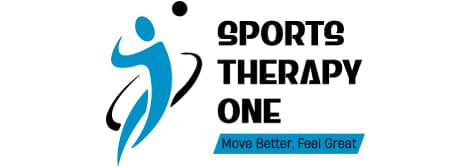Are you tired of dealing with persistent pain in your buttocks, hips, or thighs? You might be one of the millions of people suffering from gluteal tendinopathy – a condition that can cause debilitating discomfort and limit your ability to move freely. However, fear not, because in this article, we’re going to explore everything you need to know about a gluteal tendinopathy: what it is, how it develops, and most importantly, how to effectively manage and treat it.
Imagine trying to walk up a flight of stairs or even sitting down for an extended period becoming a daunting task due to excruciating pain in your buttocks. This is the reality for many individuals grappling with a gluteal tendinopathy. But understanding this condition is the first step toward finding relief and reclaiming your mobility. So, sit comfortably, (no pun intended) as we delve into the world of gluteal tendinopathy – uncovering its causes, symptoms, diagnosis, and treatment options that could change the way you approach managing this challenging condition.
Gluteal tendinopathy, also known as lateral hip pain, is a condition that affects the tendons in the buttock region. Often associated with activities involving repetitive hip movement, such as running, cycling, walking, or climbing stairs, gluteal tendinopathy can cause significant discomfort and limitation of movement. When the glute tendon is injured, it can lead to a range of challenging and often debilitating symptoms. Injuries to this crucial tendon can result in severe pain, weakness, and limited mobility in the hip and pelvis area. The glute tendon plays a pivotal role in stabilising the hip joint and facilitating movement, so injury can significantly impact daily activities and athletic performance.
Moreover, an injured glute tendon may also cause chronic inflammation and discomfort, making even simple tasks like walking or standing painful. It’s essential for individuals experiencing these symptoms to seek proper diagnosis and treatment from a qualified Sports Therapist specialising in musculoskeletal injuries. While traditional treatment options often focus on rest and anti-inflammatory medications, recent research has shed light on the potential benefits of targeted exercise and physical therapy for managing this condition.
One emerging perspective on gluteal tendinopathy revolves around the role of biomechanics. It is now known that addressing underlying imbalances and weaknesses in surrounding muscle groups can be crucial for long-term improvement. Additionally, there is growing evidence to suggest that a holistic approach, including mental health support and stress management techniques, may play a valuable role in enhancing overall treatment outcomes. By advancing our understanding beyond mere anatomical considerations, we can better tailor interventions to address the multifaceted nature of a gluteal tendinopathy and improve patient care.
One promising approach to the treatment of gluteal tendinopathy is a targeted exercise program aimed at strengthening the gluteal muscles and improving biomechanics. By addressing muscle imbalances and dysfunctional movement patterns, patients can experience significant improvements in pain and function. Additionally, incorporating progressive loading exercises such as squats, lunges, and hip thrusts into the rehabilitation program can help promote tendon healing and improve overall strength and stability of the hip joint.
Furthermore, recent studies have highlighted the importance of addressing psychological factors such as fear-avoidance beliefs and self-efficacy in the management of gluteal tendinopathy. Integrating cognitive-behavioural strategies into rehabilitation protocols can help empower patients to take an active role in their recovery process and overcome any limitations or fears associated with their condition. By shifting the focus from passive interventions to personalised exercise regimens and psychosocial support, healthcare professionals can provide more effective care for individuals with gluteal tendinopathy.
In conclusion, it’s increasingly clear that gluteal tendinopathy requires a nuanced approach that goes beyond traditional symptomatic relief methods. As ongoing research continues to unravel new insights into this condition, it becomes evident that a multifaceted approach would be a huge step forward in optimising patient care. Embracing these fresh perspectives not only offers hope for those affected but also paves the way for more effective management strategies that prioritise long-term pain free function and well-being.
Early intervention such as Sports Therapy, targeted exercises, and possibly rest or modified activity levels may be necessary to address the injury effectively and prevent further complications. Neglecting an injured glute tendon can lead to long-term issues such as muscle imbalances and reduced overall function of the affected hip joint. Proper care is vital to not only alleviate immediate pain but also support long-term recovery and prevent future injuries or complications related to the affected area.

